From ‘chip to cognition’ – Rajiv Mody and his tryst with Sasken Technologies
Meet Rajiv Mody, Founder and CEO of Sasken Technologies, the three-decade-old listed company from India that has created its niche in the communications business.
We're morphing ourselves - we were very communications focused. We're getting into other verticals but taking whatever was core to us from the communication business into the other areas and adding new dimensions to it. Aligning the whole organisation to that is a huge task. That's what is keeping me busy.
Almost three years ago, Rajiv Mody took back the reigns at Sasken Technologies, a leading product engineering and digital transformation solutions provider. He also decided to shut down the non-performing IT business unit. It was a tough call. Fast forward to today, and Rajiv has identified five verticals that his team is focusing on with a 5-5-250 mission - 5 verticals, 5 years, $250 million revenue (2017-2022).

At 59, Rajiv is pushing Sasken Technologies to new heights with his wisdom and enthusiasm. He’s our star for this week’s Techie Tuesdays. This is the story of the man who gave in three decades of his life to building his dream.
Where students did the 'Khari Kamai'
Rajiv was born in Mumbai in 1958. He spent his childhood in Rajkot, and grew up in a large family. Born to an upper middle-class family, Rajiv had all comforts as a child, went to the only English medium in the city, and scored top marks consistently. Rajiv's grandfather was a freedom fighter who later joined cooperative movement, and his father was a businessman. He, however, was influenced by his uncle, who was an engineer, and decided to study engineering.
Recalling his school days, Rajiv says, "We at Scouts had Khari kamai, where, for a week, we had to go door to and earn money by doing household jobs/chores. People wouldn't understand what we were trying to do. Somebody said - why don't you come during Diwali, we need the house to be cleaned then." This experience taught Rajiv about the art of persisting even after being denied. Eventually, Rajiv got the Rashtrapati Scout Award from VV Giri, the then President of India.
When Rajiv joined college, Chemical Engineering was usually the first choice, followed by Electrical, Mechanical, and Civil. He chose Electrical Engineering, but didn't bother much about attending classes. He attended only labs and tests which had a minimum attendance. College for Rajiv was a time when he caught up on the films he had missed earlier. However, he made up in the final year, scoring well. He says, "You realise that the art of getting marks in exams is to solve last few years exam papers."

Introduction to the world of Computer Science
After finishing his college in Baroda, Rajiv went to New York to study computer science. He was on his own for the first time, and struggled in the first semester. The winter of 1981 in New York made his first few days in the US even worse. He soon realised that there was no spoon-feeding in college, and the curriculum was driven by assignments.
Rajiv explored Unix system during the summers (six weeks courses). This was also when he wrote his first programme using punching cards. It was to multiply two 3*3 matrix. Next semester, when he took a Computer Graphics course, he was introduced to C programming language as well. "I was already struggling with Programming Language PL1. C language was a tough one to learn then. I had five other courses to attend. That was the roughest semester I would have gone to."
During one of the summers, Rajiv worked at an assembly factory that was making panels for the US Navy. He says, "It was difficult to explain to people why I, as an electrical engineering, was working in assembly line. They watched how many times you went to the loo, lunch was 1-1:30 PM. When the bell goes, everyone dropped whatever they got and left. That was the first money I made, $3 a day, which was the minimum wage."
Rajiv had earlier worked as busboy in a Chinese restaurant. Totally, he saved $300-$400 which he used later to buy a ticket to California to look for jobs.
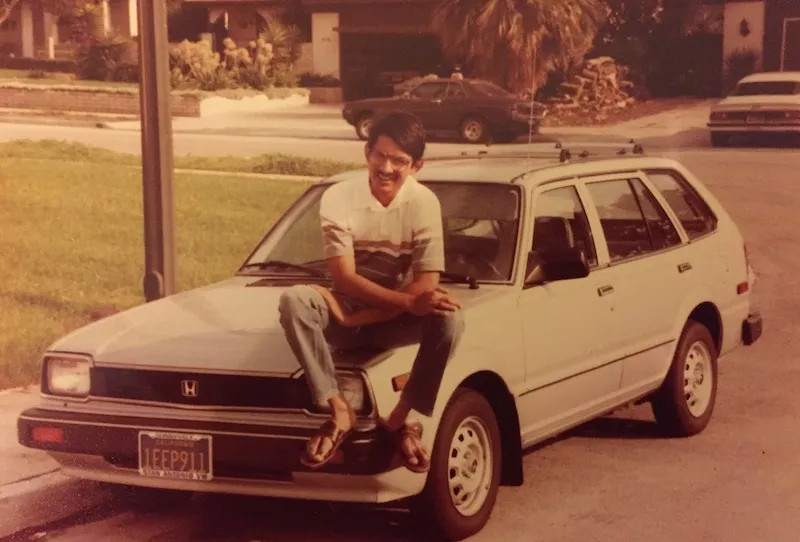
PhD that didn't last long
By now, Rajiv had understood the aspects of operating systems. He adds, "In computer architecture now we could connect what we learnt in digital circuits and how microcode (how microprogramming) will drive the output." He then learnt OS, Unix and computer architecture, followed by the concept of data structure and C. Rajiv joined the PhD programme and simultaneously became a Teaching Assistant. He thought his job as a TA would be mostly grading, whereas he was asked to teach, and that too subjects which he didn't understood that well. he adds, "I was asked to take PL1 and then PDP-11/70 assembly language to graduate students."
Rajiv believes that during teaching, he learnt the art of thinking on his feet. He had to work to manage and prepare for a two-hour class. In the following semester, he taught assembly level programming to the graduate students. During the two semesters in PhD, he also got the opportunity to learn VLSI, chip design. He says, "I could understand the underlying principles of transistors and how they are designed in CMOS and other designs. I also did silicon fabrication and processing and that got me interested in the world of silicon."
After a year into PhD, when there were campus recruitments, Rajiv decided to quit PhD and take up a full-time job in working on (and with) design tools which are used in the area of designing complex silicon chips. His first job was in the company called Advance Microdevices (in California) in 1984. In work, Rajiv found a great company in his colleague Tom Sandahl. The duo were given huge machines with all operating systems (Unix) loaded on it which provided them a great opportunity to learn Unix. They spent a lot of time hacking and learning, developing things on their own and in writing drivers (in C).
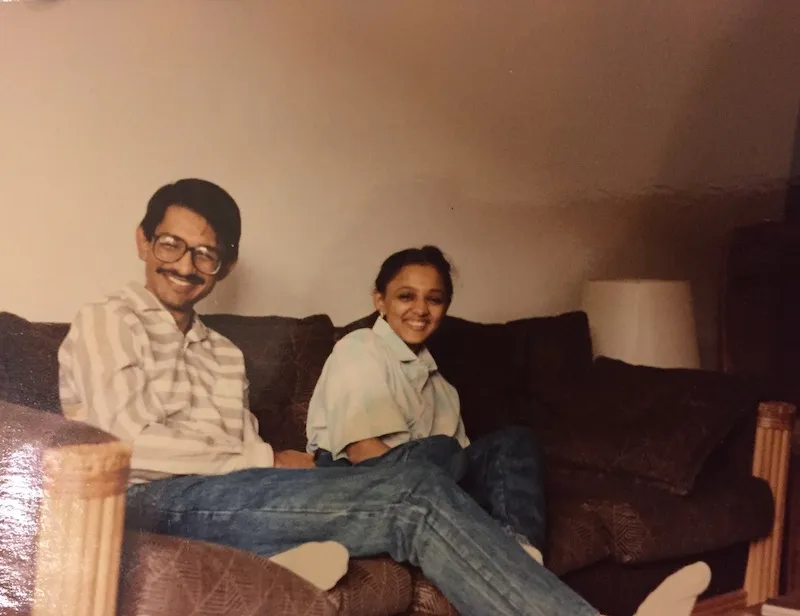
The Seattle stint
Rajiv developed tools required in placement routing algorithms (PRA). He explains, "When you've different blocks and signals, how to do automatically place the blocks for minimising the area that it takes and how do you automatically connect those signals." He implemented the algorithms that were there already researched in various journals. He also worked on NP (non-deterministic polynomial algorithms) complete problems where he used heuristics to get near optimal results. When he got the opportunity to interview with a startup in Seattle (Seattle Silicon Technologies), he went ahead as it got him out from his comfort zone. It was an offshoot of Boeing, arguably the most famous brand from the city.
Subsequently, Tom joined Rajiv at Seattle Silicon technologies. He says, "What we designed was used and that gave us satisfaction. We got recognition for our work as well. I worked on brand new development on place route technologies. My career all along remained that. Then we created global routing algorithms as well."
Related Read - Meet Anil Goel — the architect behind Hike messenger and Oyo’s scale
Laying the foundation
In 1986, Rajiv came back to India and got married. He then moved to California and joined VLSI Tech. He says, "There was always this thing in the back of my mind - when do you come back to India. I remember asking Seattle Silicon to start an India centre." In Silicon Valley, he came across Krishna Jhaveri, Suresh Dholakia, and Badru Agarwala who wanted to do similar things. Finally, all of them raised $200,000 from family, friends and an investor. Rajiv says, "The plan was to sustain ourselves for almost two years if we don't generate any revenues. We brought down our salaries to $1000/month. I packed my bags and came back to India with no intention to go back."
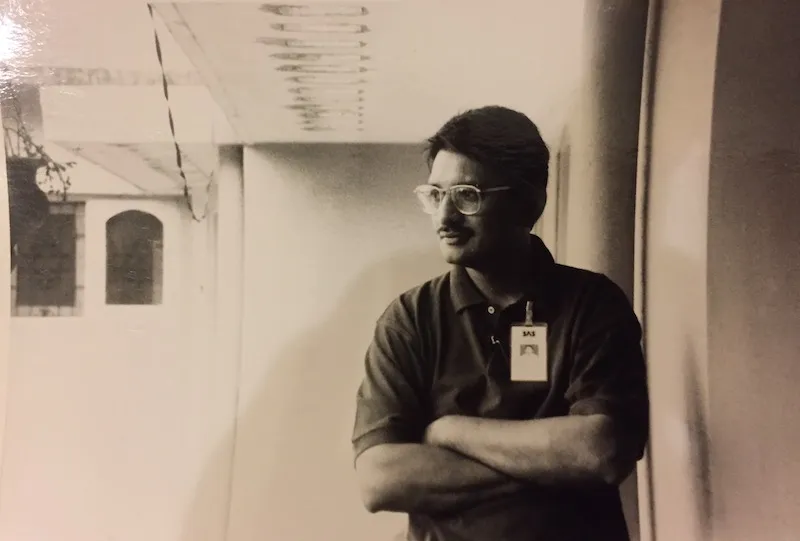
The company started as ASIC Technologies - Application Specific IC Technologies but in India it couldn't be registered because it was a proper noun. In US, it was called Silicon Automation Systems, so in India it was named SAS, India - SASI. Later, it was changed to SASKEN Technologies.
In 1989, the company needed to secure Export Oriented Unit (EOU) license which would allow it to import things without heavy duties. SASI got its EOU license in April 1990 for export of Rs 90 lakh worth of software over next five years. The company developed its own product along with some services to sustain itself.
SASI got lucky when Bell-Northern Research and Nortel Networks chose it as a partner. Within two months of starting up, team SASI secured their first purchase order for $40,000. They had to develop a translator for Bell-Northern Research's internal hardware description language (called Functional Modelling Language - 2). Rajiv adds, "We had to convert all the models that they had written e.g. AND, OR, or adder and automatically translate it to VHDL. We were also developing our own hardware description language simulator simultaneously."
Related read - Meet Kiran Bhat—the man who engineered Hulk and Tarkin to win 2017 sci-tech Oscar
Early growth at SASKEN
SASI broke into the Japan market in April-May 1990, from where they got a purchase order of $250,000 for five copies of their simulator (used for simulating digital circuits). This gave the company a much-needed cash flow and Rajiv and his team could now participate in trade shows and conferences. They went to a trade show in Miami and got recognised in the market. They soon secured orders from Korean and Japanese giants. Around the same time, Rajiv convinced Bell-Northern Research to take a license from SASI. He adds, "Meanwhile, Verilog was put in public domain, we seized the opportunity and asked Bell-Northern that we can build a Verilog compatible simulator."

This gave them a massive $500,000 order for the first time. The founding team raised money from family and friends and started the development centre in Bengaluru. They took an entire building on rent which served as accommodation for employees and the office. When Rajiv came across a paper in IEEE test magazine, written by G Venkatesh and SD Sherlekar (and their students) on language based simulator, he went to visit them and talk to them about a possible collaboration.
The team grew in Bengaluru to 30+ employees and Rajiv even got Prof G Venkatesh join him. He took lease line between IISc and Sasken to get ernet (internet, email). In 1993, SASI again got lucky when it got into Telecom (in the PBX side). They also started working in the area of AMPS TDMA based wireless systems in 1994. Rajiv adds, "In those days, outsourcing worked beautifully. E.g. Nortel had four partners, Infosys, Wipro, TCS and Sasken and they had demarcated clearly different product lines for different companies. So, there was no competition. They (companies outsourcing) didn't set up their unit/ India centre and always worked with the partners."
Also read - How Shashikant Khandelwal is making Facebook ads relevant for over a billion people
Services to product driven
In 1995, Rajiv decided to invest in developing the company's own IPs. He says, "We didn't want to miss on that opportunity. Our strength was always on embedded engineering side." He chose signal processing as an area and in that - modems and connectivity and multimedia. Unfortunately, the company struggled in selling these products. But there was a silver lining. This gave them an insight into the next generation technology - Asymmetric digital subscriber line (ADSL). SASI licensed that technology to a US-based company for $700,000. The simulator business was spun out after some time as Frontline Design Automation which then eventually got acquired by Avant (and Avant got acquired by Synopsys).

SASI then started building multimedia and DVD players running on Intel processors. However, most of the revenues and profit was still coming from services. In 1997, they started working with Nortel again in GSM product line and in 1998, on their meridian (large PBX) product line. Rajiv says,
Idea was to create a platform which allows us to confidently walk shoulder to shoulder and talk tech at the highest level of the bleeding tech so that we not second to none. In fact, our tagline was - unleashing Indian creativity.
The good, the bad and the ugly
In 1999, Intel along with Citibank invested in SASI ($10 million). It soon became a dream company for engineers. It was the golden era. Then the bubble burst, which impacted Nortel and in a matter of two months, 25 percent of SASI's revenues dropped. The company had to take hard calls. They got another hit after 9/11. Rajiv recalls,
We then started thinking that we need to diversify and capture other verticals (in communications) in the value chain - semiconductors, devices and operator services.
This strategy yielded handsome results, and in 2005, SASKEN went for an IPO. In 2006, SASKEN acquired a company in Finland. Rajiv says, "The idea was to work with Nokia and to acquire the talent in the area of hardware. 2007-08 were our peak year in terms of revenues."

In 2008, SASKEN hit a wall. Three things took place simultaneously:
- Their major client Nortel went bankrupt.
- Another big client decided to exit the wireless chip business.
- They had large work going on with a smartphone manufacturer - where SASKEN had licensed the entire stack. Unfortunately with the growth of Android, SASKEN's client decided to focus on only Android phone and kill other OS (which constituted SASKEN's business).
You may also like - Meet Mitesh Agarwal—the 'brain' of BITS who’s heading technology at Oracle India
The new avenues and strategy
In 2009, SASKEN got into satellite communications. It was initially developing certain components for a company which was manufacturing satellite phones. Faced with delivery issues, they (the client) approached SASKEN to design a full-fledged satellite phone. Rajiv says, "We had not manufactured that before but had the facility (Finland) and expertise. So, we took the leap of faith and the rest is history. Today more than half a million satellite phones out there are designed by us."
Then SASKEN got an opportunity to build rear car entertainment system for one of the largest Japanese automotive company. That gave SASKEN a magical breakthrough in the automotive. However, on the other side, with the fall of Nokia, SASKEN lost its single biggest source of revenue. The company still kept its head above the water and maintained profits.
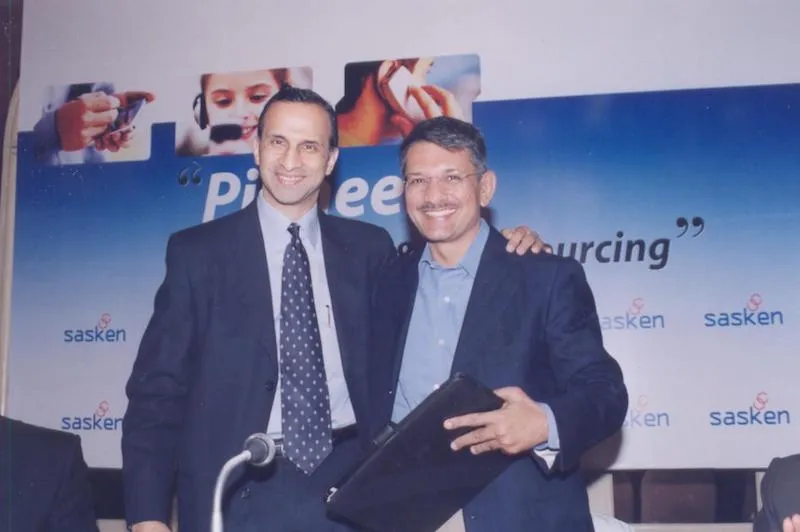
SASKEN got into IT in 2013 but in a couple of years, decided to move out when it realised it's not working out well. Rajiv adds, "During 2013-14, we realised that just by talking that language, and getting few people doesn't mean that you'll be able to break open in that space. Simultaneously we were also losing our edge on our core competency. So it was a tough call to be made saying - at the cost of losing out on what we already have, do we want to try out new things where we don't have the clarity if we'll succeed or not."
Fortunately for SASKEN, IOT and automotive was opening up in a big way then, and the entire landscape was changing giving them the opportunity to go from 'chip to cognition'. About two and a half years ago Rajiv took the reign and made this transition happen. The company now addresses five verticals - 'chip to cognition' and go all out in semiconductors, continue devices, satellite communications, automotive and industrial. They will take a bet on retail as well. Their mantra for 2017-2022 is '5 years, 5 verticals, $250 million revenue.'
Moreover, SASKEN is also looking into intelligent transportation and smart cities. They are already working with three big OEMs.
Strength and challenges
Rajiv believes that SASKEN's biggest strength is the ability to spot changes (trends) in the market and go after that. He says,
We want to go after those things which are meaningful, scalable, sustainable and where our continuous improvisation of knowledge and platform takes place. Today, you'll only be relevant if you're knowledgeable.
He further believes that in order to succeed, the company needs to have a razor sharp focus on execution; set up clear value proposition, align the organisation according to that; and deliver on the promise.
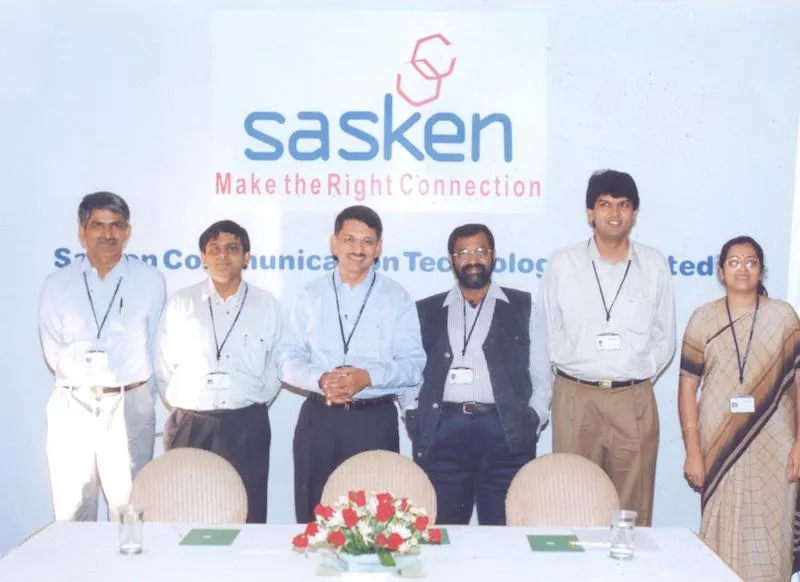
Dynamics of the market are changing rapidly. SASKEN's approach is to take different verticals which move at different paces and thus gives some buffer. Rajiv went through a tough time when he took over the reigns at SASKEN in 2015 and when the stock prices took some beating as well. But he has his own way of coming out of such situations. He says,
In those situation, focus one day at a time, and exercising because endorphins helps you get over your lows. The zeal that you've to go on and the team support has been instrumental as well. Success is only determined by how good your team is.
Of values and future
Rajiv believes in integrity, ethics and treating humans like humans. He doesn't like shortcuts or any hidden motives of personal gains. Even for hiring, he looks at the following qualities:
- Ethics and integrity - go by gut and story you listen.
- Hunger for success and results - there's no fool proof method. It's trial and error.
- Intellectual integrity - a place where you can debate and discuss
According to Rajiv, the role of a leader is to make things happen and not necessarily do everything by himself or herself. He adds, "Many get in the trap that if I'm not doing I'm not working." He further believes that being proud of who you're and not have any hesitation showing your underbelly.

Rajiv has witnessed the industry for more than three decades now but his fascination and learning have just grown with time. He says,
Silicon continues to be the harbinger of all the changes that we see in the marketplace more so than ever before because Silicon in those days was limited to industrial products of personal computers (very few).







